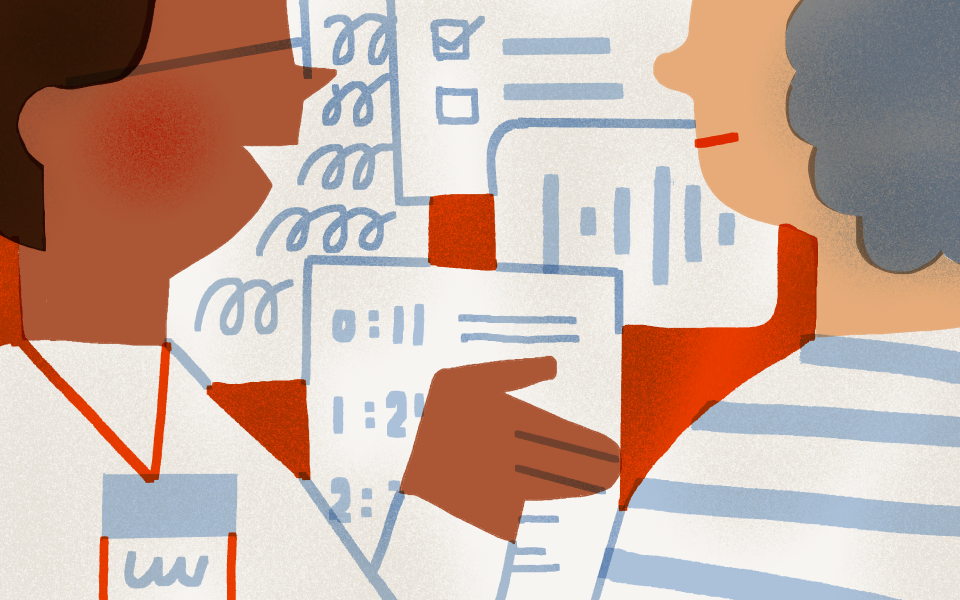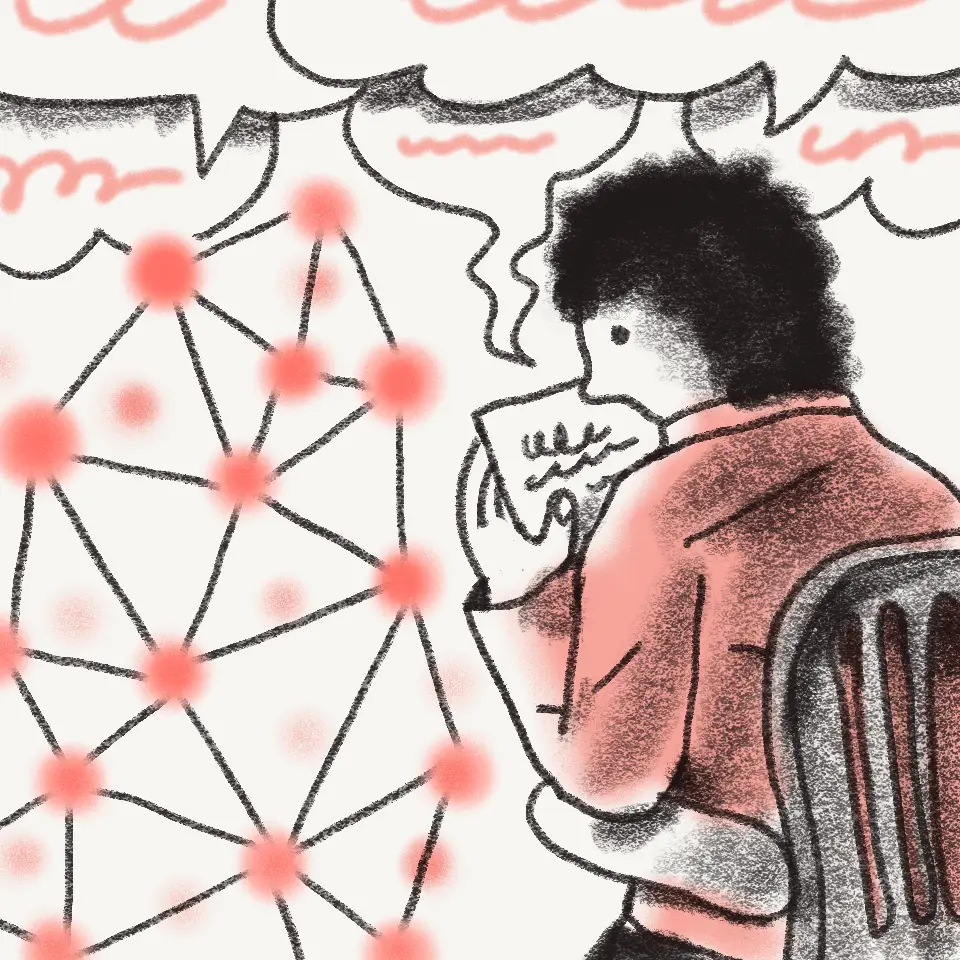.png/_jcr_content/renditions/hero_square%20(1).webp)
Leadership will always be a tightrope act. But AI can serve as a training net.
Here’s a classic corporate conundrum: You’re a high-performing individual contributor—so high-performing, in fact, you're given a team of your own to manage. Suddenly you’re expected to lead meetings, give feedback, and keep projects on track for the very first time, armed with little more than instinct (and a bunch of 🔥 Slack emojis).
Those are skills many managers are never formally taught. So how do you know where to start? Some are finding there’s a very modern answer to this classic corporate conundrum. No longer limited to drafting emails or summarizing meetings, AI tools are becoming go-to resources for real-time coaching, tone checks, bias detection, and simulated feedback practice—accessible anytime, anywhere, all with zero judgement.
Kelly Monahan is one of the best minds on this frontier: she’s the managing director of the Upwork Research Institute and co-author of the new bestseller Essential: How Distributed Teams, Generative AI, and Global Shifts Are Creating a New Human-Powered Leadership. The book combines behavioral science with leadership strategy, arguing that leaders today need to bring more connection and adaptability to the table if they want to build teams that get big things done.
Monahan sees AI not as a replacement for leadership, but as a tool that helps managers lead with greater awareness—a kind of rehearsal space and a gut check for navigating the hardest parts of the job.
“I think AI has enormous potential as a coaching, learning, and development tool,” she says. “Most executives still tend to focus on efficiency, but it can play a much deeper role in helping people grow.”
For Monahan, AI is a democratizing force as much as it is a productivity boost. In the book, she points out that only high-potential execs have traditionally been given access to coaching. Now, anyone can tap into AI tools for feedback, simulation, or help developing the kinds of soft skills needed for tough conversations with their team.
“If you’re struggling with navigating difficult colleagues, being able to workshop a conversation as you could do with AI was possible for very few people just a few years ago,” Monahan says.
"I think AI has enormous potential as a coaching, learning, and development tool," says Monahan
When your career coach is a chatbot
For Gen Z, AI is already as much a part of the workplace as email or video calls. A 2024 Harris Poll found that 82% of young U.S. knowledge workers already use AI tools at work. Nearly 90% of them said that AI helps them find the right tone in writing or navigate tricky conversations. And 86% of them said that it could make their current managers better.
The real surprise, though, is that it seems like a majority of bosses have no idea. A January 2025 McKinsey study found that while executives believe that just 4% of employees use generative AI for at least 30% of their daily work, the real number is triple that.
The message here is that if employees are quietly using AI to help do their jobs and coach themselves through difficult interactions, maybe more managers should do the same. Monahan suggests that AI tools can serve as a digital twin, or a place to rehearse a tough conversation, analyze tone, or even flag unconscious bias before it slips right into a performance review.
If employees are quietly using AI to help do their jobs and coach themselves through difficult interactions, maybe more managers should do the same
Even Monahan, who holds a PhD in organizational behavior and co-leads a research institute, isn’t immune to bias. During a recent round of performance reviews, she used an AI-powered writing assistant that evaluated her language in real time, flagging things like vague praise, lopsided evaluations, and even gendered patterns.
“I’m a female leader, but I still carry these biases,” she says. “It’s inherent to all the social conditioning we’ve grown up in.”
Monahan saw how praise for male employees leaned on words like “leadership” and “assertiveness,” while women were more likely to be recognized for teamwork or administrative diligence. It’s a subtle, common skew. It’s also one that AI is well-positioned to flag, especially when human reviewers get rushed, defensive, or distracted by all of the other work they have to do.
Monahan argues that AI can nudge, mirror, and reflect back what we might miss. “Everyone starts with the right intentions, but power tends to blind us to the needs of others,” she says. There are countless decisions a boss makes that shape a team’s culture, and many of them are unconscious ones. In this sense, AI can become a safeguard. A tool to ask, as Monahan puts it, “Am I being fair? Am I being clear? What information am I missing here?”
Learn from AI—but lead with humanity
AI isn't just helping managers learn. From finding answers and sharing knowledge to keeping teams organized, AI is increasingly taking on the logistics of modern work—leaving more room for managers to focus on the nuances of actually managing.
A 2024 report from the World Economic Forum found that leadership traits like empathy, adaptability, and emotional intelligence are only becoming more essential in the AI era. As more tasks become automated, the “human” parts of leadership—like communication, inclusion, and trust—are the attributes that will make great leaders. Human leadership is still the differentiator.
AI alone may not make you a great boss, but it might keep you from getting in the way of yourself, missing a cue, or pushing a point you didn’t intend to
But just as you can’t learn emotional intelligence from a slide deck, chatbots are only the start. The next wave of leadership development is getting more immersive. Tools like Praxis Labs’ Pivotal Practice are building immersive environments where managers can navigate realistic workplace scenarios, visually and contextually (just don’t call it a video game.) Their training platform uses generative AI to build scenarios where body language and cultural cues matter. It’s designed to help managers practice emotionally charged interactions, with an emphasis on inclusive leadership, meaning, it may present a manager with perspectives they hadn’t considered.
Monahan’s own global team is experimenting with these ideas in practical ways: using AI to structure more effective team meetings, and using it to better coordinate communication across time zones while accounting for cultural nuances and working styles around the world.
She sees the tools as a guardrail, especially for managers operating under pressure, overwhelmed by the emotional weight of leading people. At the very least, AI can be the first line of defense, she says: “Don’t go into a meeting without asking AI, ‘What could go wrong? What should I be aware of?’”
Of course, AI alone may not make you a great boss. But it might keep you from getting in the way of yourself, missing a cue, or pushing a point you didn’t intend to. Leadership will always be a tightrope act. But AI can serve as a training net.
 Dropbox Dash: The AI teammate that understands your work
Dropbox Dash: The AI teammate that understands your work
.png/_jcr_content/renditions/hero_wide%20(1).webp)


